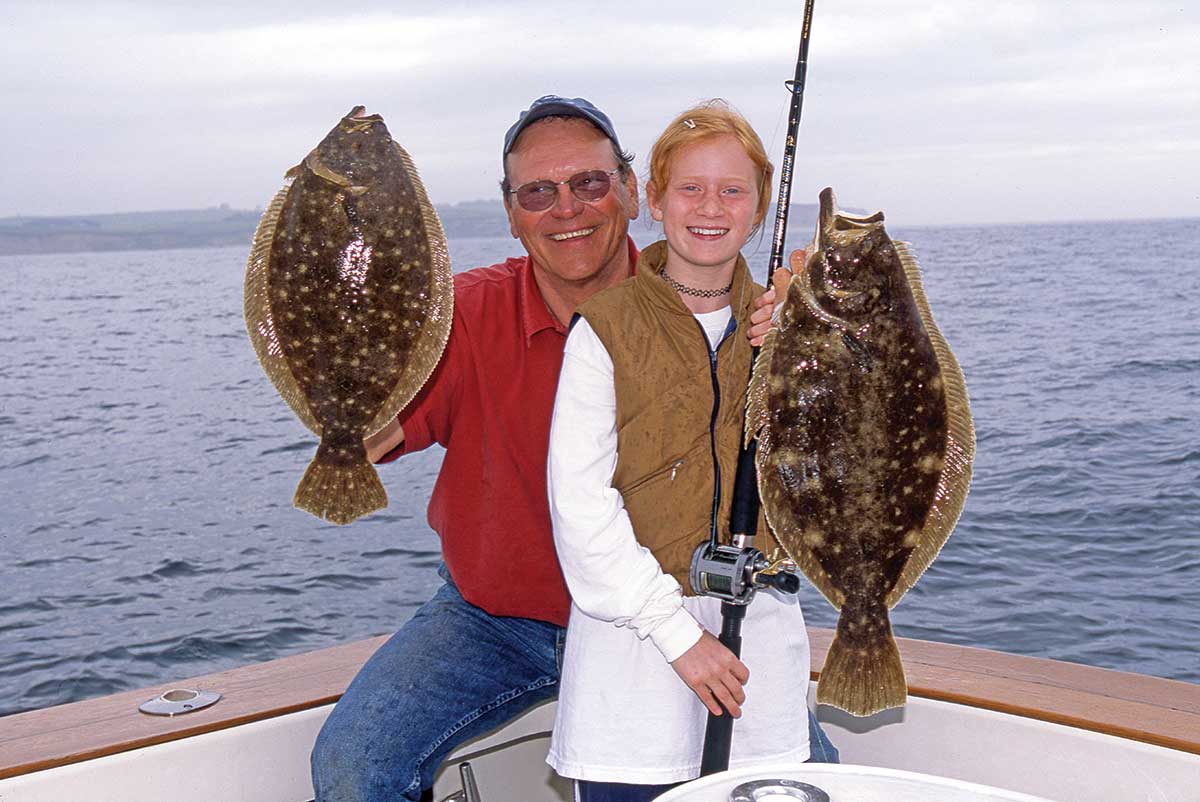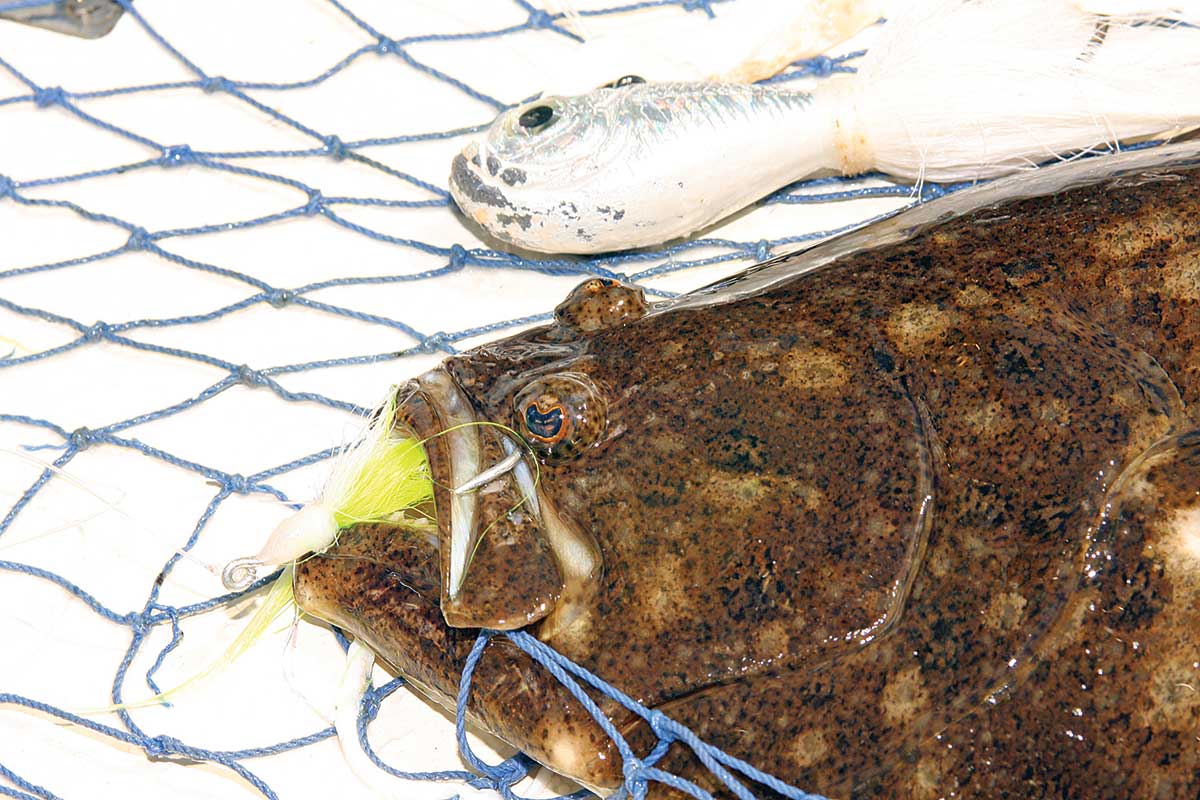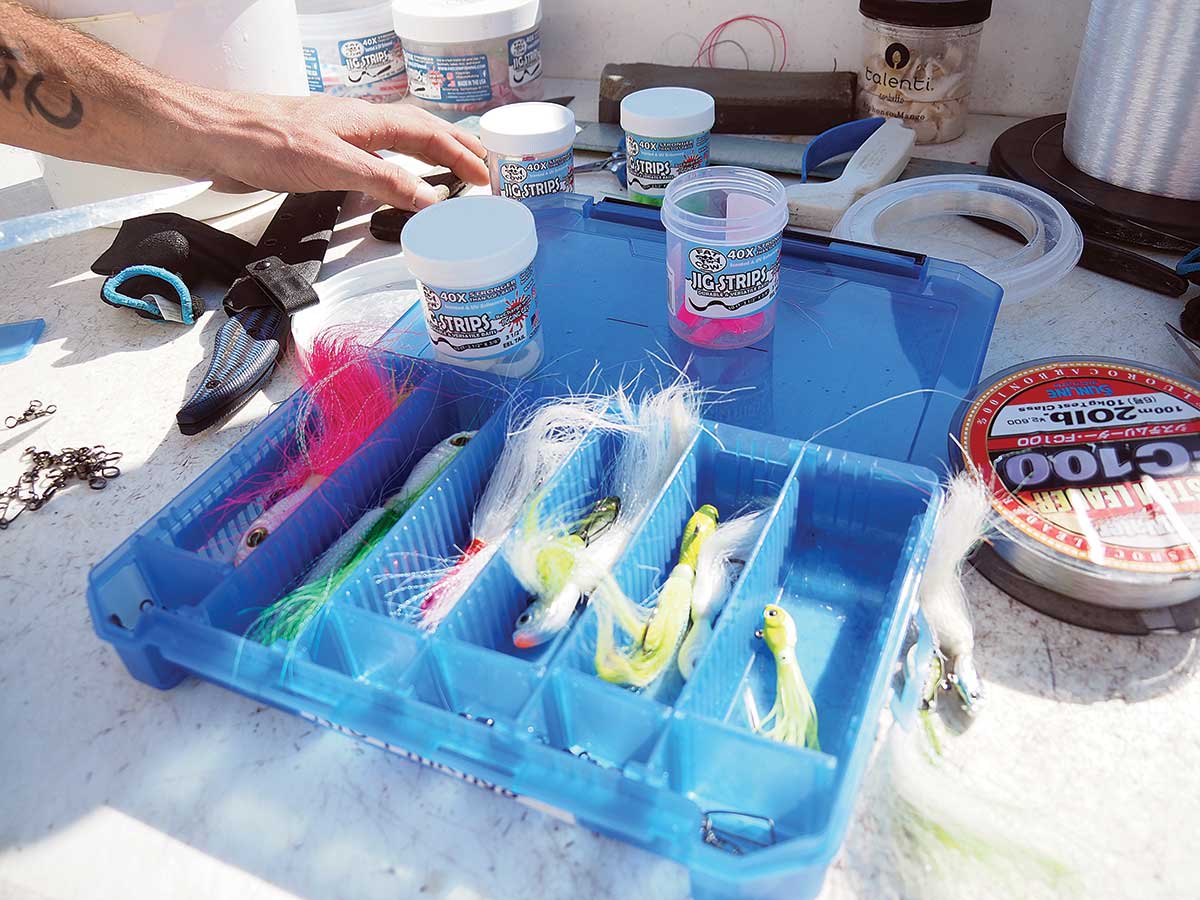
Pros share their tips for catching Block Island’s big summer flounder.
The tourism industry calls Block Island the “Gem of the Atlantic” and “Bermuda of the North.” For fluke anglers, “The Block” is all that and much more. Sitting 12 miles off the mainland between Point Judith, Rhode Island and Montauk Point, New York, this 7- by 3-mile teardrop-shaped island boasts the top qualities any fisherman could want.
“Block Island is ‘close to home but a world away,’” said Captain Chris Willi, a premier charter guide and owner of Block Island Fishworks. “We’re a small island village that retains its historic charm and footprint despite being a popular summer destination. There are no traffic jams, chain foods or big-box stores here. Block is most well-known for its 20 miles of public shoreline access and 17 miles of pristine beaches.”
It’s those miles of sandy bottom that are one the reasons Block is a historical fluke hotspot.
Fluke Haven
“What also makes Block Island such a highly productive fluking area,” said longtime expert Capt. Jim Kaczynski (retired), “is that it sits in the middle of the migratory path of fish that are making their way to the inshore bays, sounds and estuaries. It’s the first major structure they come to from the deep water off the coast. The topography around the island is so diverse that the current never seems to stop running. The tides rise and fall so differently at various spots that a move of just a mile or so can keep you in flowing water all day.”
As with other types of fishing, finding your quarry is the most important part of the flukin’ game. And with so much great looking water around the Island it’s hard to know where to start. Prime, sandy bottom with depths of 20 to 40 feet runs from Sandy Point at the north end all along the west side and around to the south end.
“Most of the popular fluke fishing spots are no secret,” said Capt. Eric Gustafson, owner of the Block Island charter boat Rooster. “From Dories Cove to the entrance of New Harbor you’ll have a good chance of landing nice fluke. Southwest Point and the south side of the island are also very productive and often hold larger fluke. The most consistent summer spot is out in front of Black Rock. When looking for doormats, I try to avoid the fleet and move around the island searching the deeper waters for bottom structure and changes in depth. I’ve found large fluke in the wind farm mixed-in with lots of big sea bass. But you gotta do your homework by staying on top of the reports.”

Going to the Dogs
Although big fluke often prefer deeper water—depths over 40 feet—so do sand sharks or “dogfish,” which sometimes interfere when pursuing flatties around Block Island. Slow current periods usually generate the highest dogfish hook-ups, and fishing through these pests is frustrating. Although this is a tradeoff you’ll face when exploring deeper water for doormats, there are ways to minimize the risk.
“At times like that,” said Kaczynski, “I try to locate little pockets holding fluke but not sharks. And I work those areas over and over. To find them I move around a lot, concentrating on edges, drop-offs and reefs where the water is running the fastest. Dogs react more slowly than fluke do, and quickly moving baits make the difference between catching flatfish and catching sharks. The dogs are usually found on the smoothest bottoms, so targeting areas with broken structure helps avoid them, and you also have a chance of jumbo sea bass mixed-in. Generally, the faster the drift, the more fluke and the fewer sharks you’ll catch.”
Pro Techniques for Hooking Up
Success around Block Island involves more than setting up a dogfish-free drift. With fluke numbers down throughout our region, keepers are scattered and fussy, so making the right presentation determines if you ride home with a limit. One way to prompt finicky fluke into biting is the stop-and-drop technique.
Unlike winter flounder, fluke are striking predators that will follow a baited hook up off the bottom. A retrieve to check your rig should be slow enough to allow a pursuing fish the chance to reach your hook.
“Although it would save time,” said Kaczynski, “never reel in as fast as normal. Use a steady pace and stop several times on the way up. Even dropping the bait back a few feet will sometimes prompt an aggressive strike. The combination of your drift speed and slow reeling will produce a bait that appears to be scurrying away and trying to escape.”
A variation of the stop-and-drop retrieve is a slow and constant raising and lowering of your rod tip as you drift. This gives the bait a squid-like pulsation or wounded-baitfish appearance along the bottom.
Another trick is harder to master but is deadly on fish that are only moderately interested in feeding. Whenever you miss a strike, immediately free-spool your rig back for about 10 to 15 seconds. This gives lazy fluke the impression that they injured or killed their prey. “It’s subtle,” said Kaczynski, “because some of these fish won’t suddenly eat and run. They inhale the dropped-back bait and just hang there with it in their mouth until you feel pressure and set the hook.”

Fluke Rigs
Ask five different fluke pros what’s the deadliest fluke rig and you likely hear five different answers. According to Gustafson, commercially-tied fluke rigs like those made by Fin Strike or Sea Striker work well. The truth is that all fluke rigs—homemade or commercially manufactured—will produce flatties when the fish are numerous, and the bite is on.
“The trick,” said fluke expert Capt. Jim Maturo (retired), “is to make fluke bite when they’re picky. I like to use a standard three-way rig with a Mylar fluke fly dressed with a squid strip and spearing on the top hook. For the bottom weight I use a 2- to 6-ounce Fluke Bomb or bucktail jig dressed with fresh bait. I change rig colors often until finding the one that’s producing that day. But I normally start with white or chartreuse. I recommend always using the lightest weight possible to maintain bottom.”
Although it’s time consuming, Gustafson agrees with the importance of changing rigs when the bite is off. He experiments with combinations of color, size, shape, scent, bait, and weight—which may be as much as 8 ounces—until he finds the formula for a successful trip. “But just remember,” he said, “what works one day may not work the next. My most reliable colors are white, chartreuse and pink. My go-to rigs use soft plastics like the 5-inch Berkley Gulp swimmin’ mullet.”
The right rod is critical for consistently landing summer flounder. Fluke can stealthily inhale a bait making subtle pick-ups difficult to detect with a stiff rod. Add paper-thin mouths and vigorous head shakes to the equation, and it’s easy to see why many big fish are lost near the surface with an unforgiving rod.
Maturo and Kaczynski recommend a 7-foot medium-light rod with a soft tip but stiff backbone matched with a high-quality reel like a Shimano Tekota 500. Spool your reel with 14- to 25-pound superbraid for its high sensitivity and narrow diameter to reduce current drag. Almost all the pros use fluorocarbon leaders in the 30- to 50-pound range.
“Fishermen from four surrounding states,” said Kaczynski, “will run their boats from the mainland just to fish Block Island’s productive flukin’ waters. It’s well worth the trip to get there from anywhere.”




